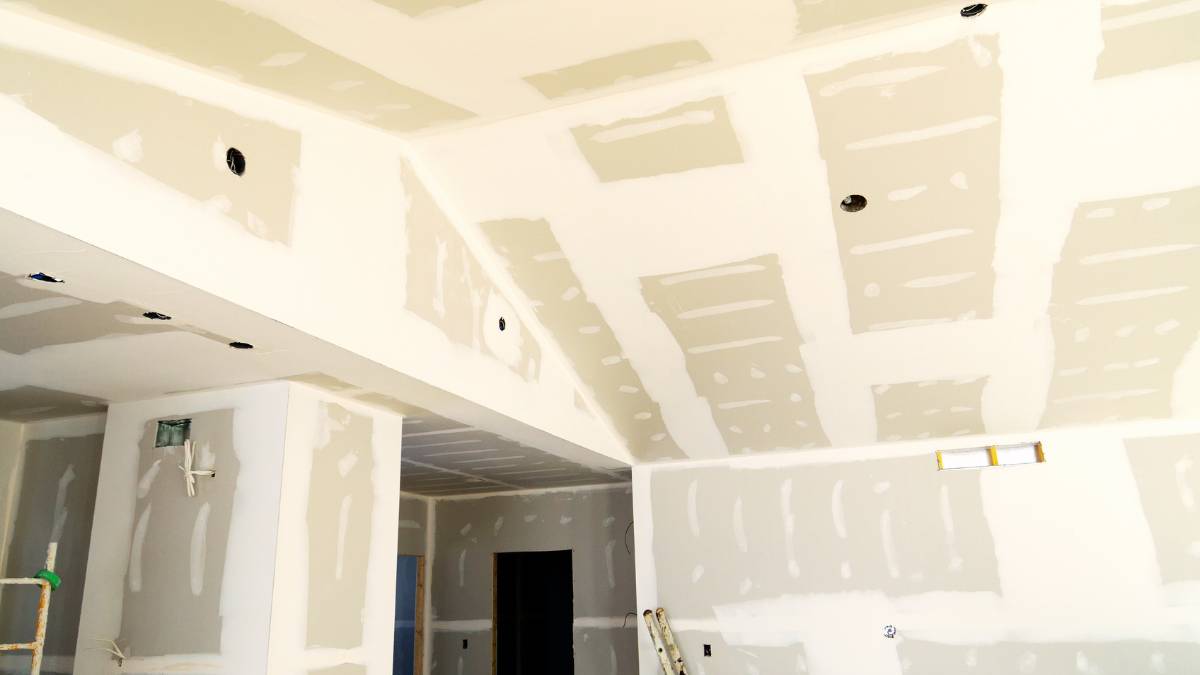Last Updated on June 18, 2024 by Kravelv Spiegel
Drywall seams showing in a ceiling can be a frustrating and unsightly issue for homeowners. Understanding the causes, solutions, and preventive measures is essential for maintaining a smooth and attractive ceiling finish. This article will delve into the details of why drywall seams become visible, how to fix them, and how to prevent them from appearing in the first place.
Key Takeaways:
- Visible drywall seams can result from improper installation, structural movement, environmental factors, and incorrect sanding.
- Fixing the issue involves re-taping seams, applying joint compound, addressing structural issues, and using proper painting techniques.
- Prevent drywall seams from showing by ensuring proper installation, controlling environmental factors, using adequate lighting, and performing regular maintenance.
- Understanding the causes and applying the right solutions can maintain a smooth, seam-free ceiling.
Causes of Drywall Seams Showing in Ceiling
1. Improper Installation
- Poor Taping Technique: If the tape isn’t embedded properly into the joint compound, it can lift and become visible.
- Inadequate Joint Compound Application: Insufficient layers of joint compound can leave the seam visible.
- Incorrect Screws Placement: Screws not set below the drywall surface or spaced improperly can cause bulging around seams.
2. Structural Movement
- Settling of the Building: Over time, buildings settle, which can cause the drywall to shift and seams to become visible.
- Expansion and Contraction: Seasonal temperature changes cause materials to expand and contract, leading to seams showing.
3. Environmental Factors
- Humidity and Moisture: Excess moisture can cause the drywall to swell and the seams to become more prominent.
- Temperature Fluctuations: Drastic changes in temperature can affect the drywall and joint compound, making seams more noticeable.
4. Improper Sanding
- Over-Sanding: Sanding too much can remove too much joint compound, exposing the tape.
- Under-Sanding: Not sanding enough leaves a noticeable ridge.
5. Lighting Issues
Improper Lighting: Harsh or incorrectly placed lighting can cast shadows and highlight imperfections in the drywall.
Drywall Seams Showing in Ceiling Solutions
Re-Taping Seams
- Remove Old Tape: Carefully cut away the old tape and any loose or cracked joint compound.
- Apply New Tape: Use mesh tape for better adhesion or paper tape for a smoother finish. Embed the tape into a fresh layer of joint compound.
- Feather the Edges: Apply additional layers of joint compound, feathering the edges out further with each layer to blend with the surrounding surface.
Applying Joint Compound
- Skim Coating: Apply a thin layer of joint compound over the entire ceiling to create a uniform surface. This can help hide any imperfections.
- Use a Wide Knife: Use a 10-12 inch drywall knife to spread the compound smoothly over the seams and surrounding area.
- Sand Smooth: Once dry, sand the surface smooth using a fine-grit sanding sponge. Be cautious not to over-sand.
Addressing Structural Issues
- Reinforce Ceiling: Install additional drywall screws or nails to secure the drywall more firmly to the ceiling joists.
- Use Flexible Joint Compound: In areas prone to movement, use a flexible joint compound that can accommodate slight shifts without cracking.
Painting Techniques
- Primer: Use a high-quality primer to seal the surface before painting. This can help even out the texture and reduce visibility of seams.
- Flat Paint: Opt for flat or matte finish paint, which is less reflective and can help hide imperfections better than glossy finishes.
- Multiple Coats: Apply multiple thin coats of paint rather than one thick coat to achieve a more even finish.
Prevention of Drywall Seams Showing
Proper Installation
- Use Quality Materials: Invest in high-quality drywall, joint compound, and tape.
- Follow Best Practices: Ensure the drywall is properly attached to the ceiling joists with the correct spacing and screw placement.
- Professional Taping and Mudding: If unsure, hire a professional for taping and mudding to ensure a seamless finish.
Control Environmental Factors
- Maintain Humidity Levels: Use dehumidifiers in damp areas and ensure proper ventilation to prevent moisture buildup.
- Temperature Control: Avoid drastic temperature changes in the home, especially during the drying process of joint compound.
Use Adequate Lighting
Install Lighting Thoughtfully: Plan lighting to minimize harsh shadows. Use diffuse lighting options to reduce the visibility of any minor imperfections.
Regular Maintenance
- Inspect Regularly: Periodically check the ceiling for any signs of cracks or lifting tape and address them promptly.
- Touch-Up: Small imperfections can be touched up with a bit of joint compound and paint before they become noticeable issues.
FAQs on Drywall Seams Showing in Ceiling
What are the common causes of drywall seams showing in the ceiling?
Common causes include improper installation, structural movement, environmental factors like humidity and temperature changes, and incorrect sanding.
How can I fix visible drywall seams in my ceiling?
You can fix them by re-taping seams, applying joint compound, addressing any structural issues, and using proper painting techniques.
What preventive measures can I take to avoid drywall seams showing in the ceiling?
Ensure proper installation, control environmental factors, use adequate lighting, and perform regular maintenance to prevent drywall seams from showing.
Is it necessary to hire a professional to fix drywall seams showing in the ceiling?
While minor repairs can be done yourself, extensive issues or structural concerns might require a professional to ensure a lasting and high-quality finish.
Final Words
Visible drywall seams on a ceiling can detract from the appearance of a room, but with proper techniques and materials, they can be effectively managed. Understanding the underlying causes helps in selecting the right approach for repair and prevention. By following best practices in installation, controlling environmental factors, and performing regular maintenance, homeowners can keep their ceilings smooth and seam-free. For extensive issues or structural concerns, consulting a professional may be the best course of action to ensure a lasting and high-quality finish.

